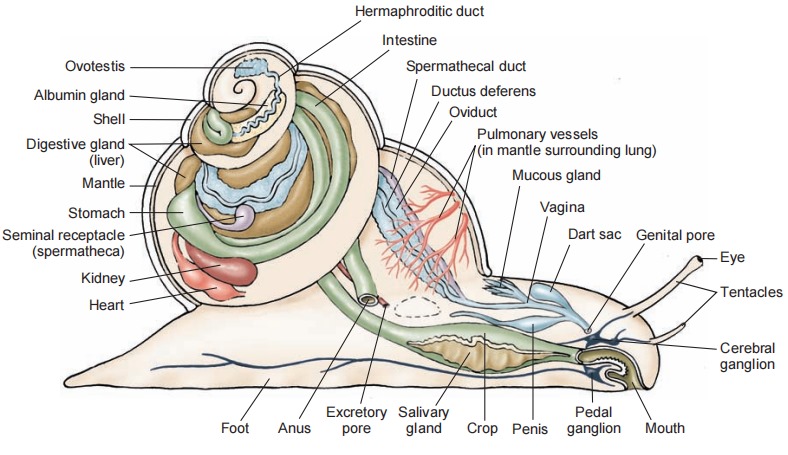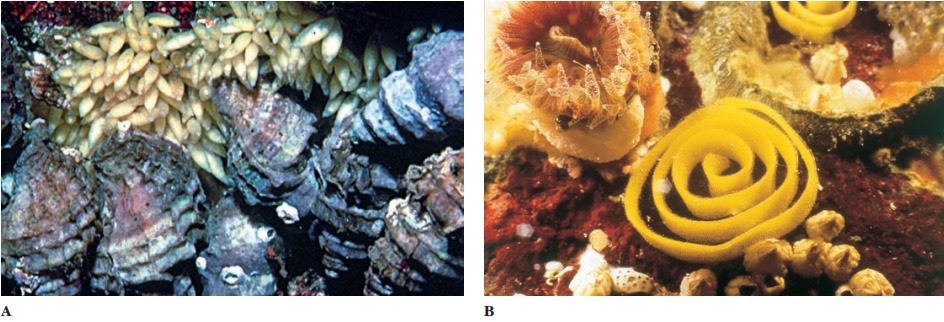Respiration in most gastropods is performed by a ctenidium (two ctenidia is the primitive condition, found in some prosobranchs) located in the mantle cavity, though some aquatic forms lack gills and instead depend on the mantle and skin. After some prosobranchs lost one gill, most of them lost half of the remaining one, and the central axis became attached to the wall of the mantle cavity. Thus they attained the most efficient gill arrangement for the way the water circulated through the mantle cavity (in one side and out the other).

Pulmonates lack gills, but have a highly vascular area in their mantle that serves as a lung Most of the mantle margin seals to the back of the animal, and the lung opens to the outside by a small opening called a pneumostome. The mantle cavity fills with air by contraction of the mantle floor. Many aquatic pulmonates must surface to expel a bubble of gas from their lung. To inhale, they curl the edge of the mantle around the pneumostome to form a siphon.
Most gastropods have a single nephridium (kidney). The circulatory and nervous systems are well developed. The latter incorporates three pairs of ganglia connected by nerves. Sense organs include eyes or simple photoreceptors, statocysts, tactile organs, and chemoreceptors. The simplest type of gastropod eye is simply a cuplike indentation in the skin lined with pigmented photoreceptor cells. In many gastropods the eyecup contains a lens covered with a cornea. A sensory area called an osphradium, located at the base of the incurrent siphon of most gastropods, is chemosensory in some forms, although its function may be mechanoreceptive in some and remains unknown in others.

There are both dioecious and monoecious gastropods. Many gastropods perform courtship ceremonies. During copulation in monoecious species there is an exchange of spermatozoa or spermatophores (bundles of sperm). Many terrestrial pulmonates eject a dart from a dart sacinto the partner’s body to heighten excitement before copulation. After copulation each partner deposits its eggs in shallow burrows in the ground. Gastropods with the most primitive reproductive characteristics discharge ova and sperm into seawater where fertilization occurs, and embryos soon hatch as free-swimming trochophore larvae. In most gastropods fertilization is internal.


Fertilized eggs encased in transparent shells may be emitted singly to float among the plankton or may be laid in gelatinous layers attached to a substratum. Some marine forms enclose their eggs, either in small groups or in large numbers, in tough egg capsules, or in a wide variety of egg cases. Offspring generally emerge as veliger larvae, or they may spend the veliger stage in the case or capsule and emerge as young snails. Some species, including many freshwater snails, are ovoviviparous, brooding their eggs and young in their oviduct.
Useful External Links
- Gastropod Anatomy (Guts, Brains, Blood and Slime) by Gordon Ramel
- Gastropod Morphology and Function by Carole S. Hickman
- gastropod by G. Alan Solem

